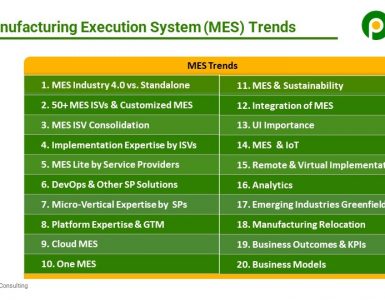There are over 800 engineering centers/ R&D centers/ tech centers/ GICs/ GCCs/ Captives/ Innovation Centers (whatever name we choose to call them) in India, and together they clock over $20 billion in engineering services revenue every year. Every quarter we have new additions to this esteemed list. Last few years, something is changing in the end goal of these R&D centers in India.
What is the end goal of these R&D centers in India?
The end goal is doing R&D and developing products, services, supporting processes, and business models for the global and Indian markets.
R&D centers started opening in India three decades back. Their roles have evolved over time. We can broadly segment them into two archetypes: Global to Indian and Indian to Global.

Global to Indian
The initial wave of R&D centers started as global centers three decades back. Global enterprises were impressed by Indian engineering talent and found the R&D center operating model as a way to leverage this talent. India provides good engineering talent at scale and at the right price points compared to other counties.
Initially, the focus was on providing support to global teams from India. Later after the credibility of the Indian team and talent was established, more work with higher responsibilities started coming in. Many global product lines are being led from Indian R&D centers. After the Indian R&D center leadership was established in delivering products, they started playing a role in developing products for different countries, including India. The rise of the localization manufacturing wave and the increase in domestic demand in India is further providing impetus to this trend.
One such example is Cisco. Its R&D center in Bangalore was established in 1996 and operated as an extended workbench providing support in the activities of the US-based R&D headquarters. After initial success, its scale and mandate expanded. It was called Globalization Center East and became the second biggest R&D center for Cisco after the US. The center's mandate changed to develop products from concept to completion. In 2016, Cisco marked the launch of its local manufacturing initiative in the country by setting up a unit in Pune, which it had to shut down due to ecosystem challenges. The India R&D team identified a backhaul router as the ideal product to meet the needs of the local Indian market. Now it has been in the news that Cisco is planning to set up a manufacturing unit in India. India is a big market for 5G, and Cisco wants to capture a larger share by producing equipment and hardware products locally. It will take advantage of Indian government manufacturing incentive schemes. Going forward, Cisco's Indian R&D center will have the potential for more India-related R&D apart from Global R&D.
Indian to Global
In the last few years, some R&D centers have been established by global firms as part of their manufacturing expansion. The intent was to tap local market opportunities in India by aligning R&D with local manufacturing. As R&D centers mature, enterprises started getting more confident about the role R&D centers can play, and their role is evolving to global R&D also from India.
One example is Daikin, the Japanese air conditioner manufacturer. Daikin opened its first research and development (R&D) center in 2016 in Neemrana near its manufacturing plant to make tailor-made products for the Indian market. Later it opened its second R&D center in Hyderabad, focusing on advanced technologies, IoT, AI, etc. Recently Daikin announced its third R&D center in Neemrana with an investment of Rs. 500 Crore. The new center will have 22 testing facilities and labs. This R&D center will look at building products that not just suit Indian consumers but will also focus on creating technologies that are sustainable and environment-friendly for global consumers.
These are two broad archetypes, and there are many R&D centers that will have some combination of the above two. The overall direction is India + Global R&D from R&D centers in India.
What can R&D centers in India do?
R&D centers should be proactive instead of reactive. They should consider the following:
- Capability building for local and global R&D opportunities depending upon which archetype they are and preparing themselves for the next phase of growth
- Internal alignment for local and global R&D opportunities. For local R&D opportunities, they need alignment with local sales and business teams. For global R&D opportunities, they need to work with global R&D leaders and make a business case for taking more responsibility and leveraging talent at scale in a cost-effective way.
- Manufacturing alignment with local manufacturing units wherever applicable. In case of enterprise doesn't have a local manufacturing unit yet, then these centers can play a proactive role in working with internal and external experts and making a business case for manufacturing in India, and later supporting its execution.
- Engagement with engineering service providers to develop and scale capabilities. Depending upon local or global R&D requirements, it could be value engineering, knowledge of local and global supplier landscape, developing specs for products with customer research, testing/ certification requirements, experience in new and emerging technologies, etc.
- Developing a local ecosystem of enterprises, start-ups, and academia, for innovation, research, and capability development.
What can Indian engineering service providers do?
Engineering services providers can help R&D centers in their next phase of growth. ESPs should consider the following:
- Services packaging and articulation of capabilities required and warning of challenges to overcome from transition to Indian or global R&D, as the case may be.
- Developing thought leadership sharing knowledge of best practices and benchmarks gathered through working with several local and global R&D engagements and how they can help R&D centers in their next phase of growth.
- Identify talent requirements in R&D centers and proactively develop talent in their area of interest.
Bottomline: A trifecta of Indian market opportunities, Indian manufacturing assets, and Indian R&D talent will create more local and global R&D opportunities. This is the perfect opportunity for R&D centers to become more strategic assets to their parent organizations. The onus is on Indian R&D centers to make the most use of these opportunities and convert growth possibilities into reality.





 Pareekh Jain
Founder of Pareekh Consulting & EIIRTrends
Pareekh Jain
Founder of Pareekh Consulting & EIIRTrends
Add comment